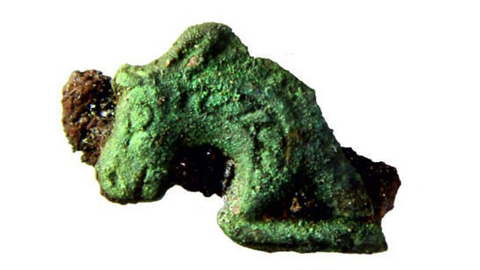Siberian Federal University Experts Digitize The Artifacts Of The Necropolis Of The Hun Period
Scientists of Siberian Federal University have digitized ancient artifacts found in Boguchany district of Krasnoyarsk Territory. Rare jewelry, religious and household items helped to learn about the way of life of the oldest inhabitants of the banks of the Angara River, who settled in the vast taiga zone of Yenisey Siberia during the Migration Period in the 3-4th centuries AD and large-scale migrations of the Xiongnu (Huns) people.
The Punkt Proshlogo (Point of the Past) digital project, developed by researchers of the School for the Humanities, SibFU, is based on a valuable collection of ancient artifacts. User-friendly navigation allows you to get acquainted with the artifact, their purpose and functions in the life of the ancient Angarians. The technical concept of the project was implemented by specialists of the Digital Humanities laboratory and SibFU master students.
“The artifacts unearthed from the Migration Period burial site have come into the spotlight. For the first time we were able to identify the burials of this historical period in the entire huge taiga zone of Yenisey Siberia. This is the first such necropolis found in our region, therefore, we want to present these artifacts in an interesting and visually appealing manner to the widest audience”, said Polina Senotrusova, senior researcher at the Laboratory of Archaeology of Yenisey Siberia, SibFU.
Jewelry and utensils were unearthed in 2018-2022 during archaeological expeditions led by Dr Pavel Mandryka, professor at the Department of Russian History, World and Regional Civilizations, SibFU, and Polina Senotrusova.
The most striking artifacts were selected for the project, for example, two images of predatory day birds. The figures are in good condition and look realistic, with ornate wings and tails.
The position of the wings shows that the birds are depicted attacking the prey. According to the specific shape of the wings, tail and the general outline of the body, scientists assumed that one figure depicts a falcon, and the second one depicts an eagle. Another image of the animal found in the burial site is incomplete. This is the head of a hoofed animal, most likely a reindeer. The outlines of the ear and expressive face, as well as the bent front leg, are clearly visible.
“The images of birds and deer were rather decorative. The ancient wealthy inhabitants of the Angara banks decorated their clothes with elements that protected their owners from the evil eye, diseases and troubles. Flat disks made of white bronze with a thin concentric ornament are a completely different type of image. Such disks might have been a symbol of the sun, religious or astronomical objects, but their exact functional purpose is unknown, and further research is required to confirm the guesses”, continued Polina Senotrusova.
The peculiar thing is that all bronze products from the necropolis in the Lower Angara region were imported, and the exact place of their manufacture is unknown. According to experts, in the first half of the 1st millennium AD, such objects were widespread from the Cis-Urals to the banks of the Angara. The artifacts themselves draw the most north-eastern line of their distribution. Scientists believe that such things are important markers showing the directions of cultural ties of the Angara population in ancient times.
Nikita Pikov, head of the technical implementation of the project, senior lecturer at the Department of Information Technology in Creative and Cultural Industries, SibFU, said that the Punkt Proshlogo (Point of the Past) website was developed using ReactJS library, which allows you to create modern web interfaces, and Three.js library, which simplifies the process of creating and rendering 3D graphics in a web browser.
“The combination of these tools makes the website quite dynamic, and allows you to organically use 3D models that were created by photogrammetry. This is the determination of the shape, size, position and other characteristics of objects based on their photographic images. Since the models created by this method usually have a huge number of polygons, it was necessary to optimize 3D models for stable operation on most devices that site visitors can use. To do this, we needed retopology, i.e. the process of converting high-poly 3D models into low-poly ones, while the visual quality of the model itself is preserved. In addition, to improve the performance of our site, we used the GLTF format, which is quite standard for 3D models and shows the best results in terms of download speed in web browsers”, explained Nikita Pikov.
“At the end of the project, we came to the conclusion that the people whose history we came into contact with did not live in isolation in dense forests. They worked and traded actively with people in other territories. When the Xiongnu were defeated by the Han Empire warriors and their allies, they moved from Central Asia to the west. And although it was previously thought that the rampant migration of the Xiongnu-Huns affected mainly the steppes, our artifacts clearly show that global changes also affected the deep taiga areas. On the banks of the Yenisey and Angara, craftsmen developed iron processing technologies, and the exchange with people in the southern and western territories intensified. There were new ceramic dishes, weapons became more advanced and convenient”, informed Pavel Mandryka, research supervisor, Dr. Sc. (History).
The project was implemented with the support of the Priority 2030 program. The materials used will be presented on the Sibiriana platform, developed at Siberian Federal University.

